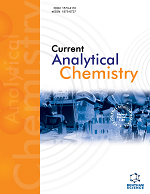
Full text loading...
We use cookies to track usage and preferences.I Understand
The present study is focused on the collection of honey samples from the different geographical and climatic conditions of Khyber Pakhtunkhwa and analyzing them for the determination of riboflavin. Quantification of riboflavin, being natively fluorescent, was accomplished using spectrofluorimetric method. Riboflavin has characteristic fluorescence spectra with maximum excitation at 464 nm followed by an emission peak at 525 nm.
The procedure followed in this work comprised the construction of a calibration curve by plotting the fluorescence intensity of a series of riboflavin solutions versus concentration. This curve was used for the quantification of riboflavin in the collected honey samples. The effect of several external factors such as the altitude of the sampling area, type of honey bee, type of flowers from which the nectar was collected, and sampling season on the concentration of riboflavin in the honey samples was statistically evaluated.
It was concluded that the samples collected from lower altitudes have high concentrations (1.156±0.08 μg g-1) of riboflavin. Similarly, the samples collected in autumn were found to have a maximum average riboflavin concentration of 1.37±0.06 μg g-1, which was higher in comparison to the samples collected in other seasons of the year. Likewise, the effect of flora on the concentration of riboflavin was also investigated and it was found that honey samples collected from areas where the nectar was collected from Ziziphus contains maximum riboflavin concentration averaged at 1.383±0.1 μg g-1.
Based on the size of the honey bees, the samples collected from hives of small honey bees were found to have a maximum riboflavin concentration of 1.176±0.07 μg g-1. This study suggests that besides the studied vitamin, the rest of the vitamins and other nutritional components may vary in the honey samples depending upon external factors.

Article metrics loading...

Full text loading...
References


Data & Media loading...
Supplements

